

How To Secure Your Precious Diamond From Holding It In Tweezer

Table of contents
Introduction
The world of gemology and jewelry craftsmanship is a realm of precision, where every facet, inclusion, and color nuance holds significant value. In this intricate domain, the simple act of holding a diamond in tweezers emerges as a vital practice, underpinning the meticulous assessment and presentation of these precious gemstones.
The Role of Tweezers
Tweezers, often crafted with the utmost precision themselves, are more than mere tools; they are the trusted extensions of skilled gemologists and jewelers. Regarding diamonds, these tiny, multi-faceted marvels of nature, tweezers play a pivotal role in their journey from rough to polish.
Examination and Assessment
The first and foremost role of tweezers in the world of diamonds is to offer a secure and controlled grip on the gem. This grip allows gemologists and experts to scrutinize the diamond's every facet, inclusion, and coloration.
Inclusions and blemishes, those tiny imperfections that whisper tales of the diamond's formation, are observed under various angles, guided by the firm yet delicate grasp of the tweezers.
Clarity and Color Grading
For clarity grading, tweezers provide the stability required to navigate the complex internal landscape of the diamond. The presence, size, and location of inclusions are critical factors in determining the diamond's clarity grade. Tweezers ensure a steady hand and a focused eye in this delicate process.
Likewise, tweezers set the stage for evaluating a diamond's color. Against a neutral background, the tweezers allow experts to gauge the diamond's color, from the icy brilliance of colorless diamonds to the warm hues of those with subtle tints.
Precision and Presentation
The hold of tweezers assures the diamond's security and minimizes the risk of damage, ensuring that even the most valuable gem remains safe during examination and evaluation. Beyond utility, tweezers add an element of professionalism to the presentation of diamonds. They serve as the stage on which these gems unveil their brilliance, symmetry, and unique characteristics.
Holding a diamond in tweezers is an art that requires finesse, skill, and an understanding of the gem's intrinsic value. It is a pivotal step in the journey of a diamond, where its story begins to unfold under the discerning gaze of experts.
In the following pages, we will delve deeper into the significance, techniques, and nuances of holding diamonds in tweezers, offering insights into the meticulous world of gem examination and assessment.
Requirements and Importance Of Tweezer For Holding A Diamonds
Holding a diamond in tweezers is a crucial step in the diamond assessment and evaluation process, particularly in the jewelry industry and the field of gemology. The assessment of holding a diamond in tweezers features the important task of knowing the actual price and quality of the stone.
Diamond connoisseurs and gemologists inspect the diamond's quality from holding the stone and viewing every corner and surface. Here, we mentioned the importance of holding the diamond in a tweezer with perfection.
Let's see them one by one for a better understanding.
The importance of holding a diamond in tweezers lies in several key aspects:
1. Examination and Inspection
Tweezers provide a controlled and secure grip on a diamond, allowing gemologists, jewelers, and appraisers to closely examine the stone for various factors, including clarity characteristics (inclusions and blemishes), color, cut quality, and overall condition.
Also, after the diamond polishing process, the stone goes for evaluation and cleaning, where it is mandatory not to touch it with hands. Becuase it implements blemishes and tiny impurities to the surfaces of the diamonds.
2. Assessing Clarity
Diamonds are graded for clarity based on the presence of internal inclusions and external blemishes. Tweezers allow for precise positioning and manipulation of the diamond to view these imperfections from multiple angles and under proper lighting conditions.
Using the tweezer, the diamond grader easily decides which clarity type the stone has. Moreover, the diamond clarity ranges from FL (Flawless) to I3 (Included3), depending on the inclusions containment. Thus, every jeweler and diamond expert prefers to hold the diamonds in tweezers.
3. Evaluating Color
Diamonds are also graded for color, ranging from colorless (D) to light yellow or brown. Holding the diamond in tweezers permits the observer to view the stone against a neutral background, aiding in accurate color assessment.
Even when inspecting the color grade, it is determined how much the sparkle will come from the diamond. Taking the tweezer's help to see the diamond's color will help to decide the cost and appearance. That's why it's widely used in the manufacturing chain of the diamond.
4. Analyzing Cut Quality:
The tweezers facilitate the examination of a diamond's cut and proportions, including aspects like symmetry, facet alignment, and the presence of any chips or abrasions on the diamond's surface.
Diamond symmetry is easily recognized in the tweezer view because it provides the complete evaluation to decide the symmetry's grade. Also, if any errors exist but without the tweezer usage, it does not appear. So, to be ensure about the diamond quality, the tweezer is required.
5. Identification
Gemologists use tweezers to handle diamonds during identification, verifying their authenticity and ensuring they are not synthetic or imitations. Sometimes, ordinary crystals are sold as natural diamonds; buyers are completely unaware of this fraud. To check the attributes of the diamond, the tweezer will help to see every aspect and surface that features in a diamond.
6. Photography
When diamonds are photographed for appraisal or certification purposes, tweezers provide a stable and controlled platform to accurately capture the stone's characteristics. As a result, many jewelers prefer to photoshoot of diamonds in tweezer so that buyers can see the grades of the diamonds.
7. Security
Holding a diamond in tweezers minimizes the risk of damage or accidental loss during the examination process. It ensures the diamond is securely held in place, reducing the chances of mishandling. Many diamond connoisseurs insist on handling the diamond stone properly, especially in the tweezer, to secure the symmetry, surfaces, and obtained grades.
8. Presentation
When showing a diamond to potential buyers or clients, tweezers offer a professional and visually appealing way to display the stone. This can enhance the overall presentation and impact of the diamond. The tweezer usage for displaying the diamonds in every aspect and position brings additional value. Also, it helps to make a purchase decision.
9. Cleaning and Setting
Tweezers are also used during the cleaning and setting of diamonds in jewelry. They enable precise positioning of the diamond within a mounting or setting. For example, if you have a solitaire engagement ring in diamond and want to clean it at your home, then you have to neglect the hands touch on the stone. It will decrease the sparkle reflections and add blemishes to the surfaces.
10. Precision
Tweezers come in various designs, including specialized gemological tweezers with fine tips for delicate handling. They provide the precision required for accurate assessment and manipulation of small, valuable gemstones like diamonds.
Holding a diamond in tweezers is a fundamental practice in the diamond industry, facilitating examination, assessment, and handling of these precious gemstones. It ensures that diamonds are evaluated accurately, securely, and professionally, whether for appraisal, grading, or setting into exquisite jewelry pieces.
Most numbers of peoples ask this question. The tweezer requirement is mandatory because when we take a diamond on hand, our hands have some impurities that release impurities on a diamond and reduce the diamond's shining looks.
Does the Diamond Shape Affect the Tweezers Grip?
Yes, every diamond shape is different, so the tweezer's grip is changed to secure its symmetry, facets, and brilliance in natural form. For example, a cushion cut diamond perfect grip holds it from the cornered different direction. While a round cut diamond, it has been holding with the girdle formation.
Let's see how to hold different diamond shapes according to their identical formation in the tweezer.
1. Round Cut Diamonds Perfect Grip In Tweezer
Round cut diamonds have 360° degree formation in the carbon crystal structure. These diamonds are mostly made with a brilliant cut where the scintillation and fiery appearance every moment. Thus, holding the round cut diamond properly in the tweezer is important.
![[1.00 carat weighted round brilliant cut lab-grown diamond in VS2 clarity and E color grade]-[ouros jewels]](https://cdn.shopify.com/s/files/1/0527/7669/8040/files/Round_Cut_Diamond_In_Tweezer_Grip.webp?v=1695037174)
The round cut diamonds are perfectly caught from the girdle anatomy with their ideal form. To inspect the round diamond's clarity, cut, color, and blemishes, it's best to hold it with the girdle. Don't try to push the diamond for holding from the table or tick point surfaces; it might invite unrequired inclusions, scratches, and blemishes.
2. Holding The Oval Cut Diamonds In Tweezer
The best way to grip the oval cut diamond in a tweezer is in the top and bottom direction. Meanwhile, from the side girdle view, the oval looks perfect for knowing where the diamond inclusions or color appears. But, the ideal position to hold the tweezer in the oval cut should be the north-south side as opposite surfaces.
![[2.50-carat weighted elongated oval cut lab-grown diamond in 10.45x7.57x4.84 MM dimensions]-[ouros jewels]](https://cdn.shopify.com/s/files/1/0527/7669/8040/files/Oval_Cut_Diamond_In_Tweezer_Grip.webp?v=1695037686)
If you try to hold the oval cut diamond from the pavilion or table surfaces, it might lose the sparkle and bring unnecessary scratches. Due to inexperienced holding for the tweezer in oval diamond, it invites the reduction of the overall value, whether it's a $3000 or $50000.
So, the perfect grip of the oval diamond is important at every stage, from manufacturing to placing in the ring's prong settings.
3. Holding The Cushion Cut Diamond
Cushion cut diamonds are square-shaped stones with a sharp, soft curved edge similar to princess cut. Due to their soft edges, holding the cushion diamonds from the side angles means a girdle anatomy is the perfect choice. You can secure your precious gem's color, clarity, and symmetrical balance from this angle.
![[5 carat weighted fancy blue colored cushion cut lab-grown diamond with VS1 clarity and ideal grade]-[ouros jewels]](https://cdn.shopify.com/s/files/1/0527/7669/8040/files/Blue_Cushion_Cut_Diamond_In_Tweezer_Grip.webp?v=1695038879)
The perfect view is the two opposite corners holding in tweezer for a square cushion cut diamond. Also, with the girdle anatomy position, the diamond appears at the required angle, which has been helpful for the evaluation of the costs and quality grades.
If you opted for a cushion cut diamond halo engagement ring and want to be sure about the color, clarity, and cut grades, then demand a complete video, especially in the tweezers. Using and seeing the diamond tweezer video will help to know the quality and satisfy the customers to know the actual price they're paying.
4. Princess Cut Diamond Holding In Tweezer
To hold the princess cut diamonds with perfection to grip the two alternate corners of the stone in a tweezer. You can hold the princess diamond from the girdle anatomy, but it provides an incomplete view for further inspection. With the complete evaluation, jewelers prefer to grab the princess diamond in a tweezer from the opposite corners.
![[VS clarity graded and pink colored princess cut lab-grown diamond with the brilliant cutting styles]-[ouros jewels]](https://cdn.shopify.com/s/files/1/0527/7669/8040/files/Pink_Colored_Princess_Cut_Diamond.webp?v=1695039983)
Princess cut diamond has sharp edges, corners, and swallowed crown surfaces. So, holding the diamond from the crown anatomy is impossible in a tweezer. The best way to hold the gem from the corners is to secure the diamond fluorescence effects, not a girdle or pavilion surfaces.
Suppose you have an idea to propose to your love partner with the princess cut diamond in a promise ring; then, as a buyer, you have to know the perfect grading scales. To evaluate the value of the diamond with perfection, a tweezer inspection helps in it a lot. It reduces the microscopic examination and time to determine the ideal value and grades.
5. Heart Shaped Diamond In Tweezer Grip
Heart cut diamond is a fancy shape with different formations of symmetrical balance to hold it perfectly from the side girdle. Also, you can grip the heart diamond from top to bottom surfaces; this is the right and accurate way to hold the diamond in a tweezer.
![[Brilliant heart cut lab-grown diamond with 3.52 carat weights and VS1 clarity grades]-[ouros jewels]](https://cdn.shopify.com/s/files/1/0527/7669/8040/files/Heart_Diamond_In_Tweezer.webp?v=1695040716)
If you try to hold a heart diamond on the table or pavilion surfaces, it might fall on the land, and some scratches appear on the diamond. Due to its distinctive symmetrical content, heart cut diamond should be held in the tweezer from the side girdle anatomy.
When you purchase a heart diamond wedding earring for women, consider the tweezer video first from your jeweler. Despite certification, the visuals of your chosen diamond will provide a complete overview of how it will look on jewelry.
6. Holding Asscher Cut Diamond In Tweezer
Asscher cut diamond is another square-shaped gem with larger step-cut facets and a transparent appearance. For Ideal evaluation of the diamond's value and appearance from the tweezer holding, then grip the Asscher cut from the girdle anatomy in different corners.
![[Square-shaped Asscher cut lab-grown diamond in VS1 clarity]-[ouros jewels]](https://cdn.shopify.com/s/files/1/0527/7669/8040/files/Asscher_Cut_Diamond_In_Tweezer.webp?v=1695041396)
From that view, all of the blemishes and errors are easily identified. Many jewelers and diamond experts prefer to hold the Asscher cut diamonds from the girdle anatomy, where they can note the changes in the formation. As a buyer, you should also demand a tweezer video for your chosen Asscher cut diamond jewelry.
For example, an Asscher cut wedding eternity band is the perfect choice for revealing the commitment and love towards a spouse. But, before it, you have to know which grade will be perfect for the wedding band. This will be perfectly evaluated with the tweezer video of the diamond.
7. Emerald Diamond Holding In Tweezer
Hold the emerald cut diamond perfectly in a tweezer, then grip it from the two opposite side cutting edges. It's the best view to know the diamond 4cs in an emerald cut. Also, seeing the dimensions and facet patterns on the diamonds is helpful.
![[2.80 carat weighted emerald cut lab-grown diamond in elongated shape]-[ouros jewels]](https://cdn.shopify.com/s/files/1/0527/7669/8040/files/Emerald_Cut_Diamond_In_Tweezer.webp?v=1695042079)
From the culet anatomy of the diamond, an emerald cut will not give an easy grip. Thus, every diamond jewelry expert prefers to hold the elongated emerald cut diamond from the side angle corners.
8. Tips To Hold Marquise Shape Diamond In Tweezer
Marquise diamond is an elongated and shrunk fancy shape that refers to the eye of human beings. This diamond cut has a swell structure on the middle side edges, so it's not possible to hold it from the middle surfaces. But, from the two opposite sides grip in the tweezer, the marquise diamond cut looks excellent.
![[12.43*7.16*4.69 MM dimension marquise cut lab-grown diamond in brilliant cutting style]-[ouros jewels]](https://cdn.shopify.com/s/files/1/0527/7669/8040/files/Marquise_Shape_Diamond.webp?v=1695042613)
To secure the ideal anatomy of the marquise diamond, hold it in the north-to-south direction in a tweezer. Many diamond jewelry experts insist customers clean their marquise diamond rings or jewelry with the tweezer holding. It decreases the risks of metal tone changes and the grade scale difference from the originality.
9. Radiant Cut Diamond Holding In Tweezer
![[Pink radiant lab-grown diamond]-[ouros jewels]](https://cdn.shopify.com/s/files/1/0527/7669/8040/files/Pink_Radiant_Diamond.webp?v=1695042973)
10. Pear Shaped Diamond in a Tweezer
To perfectly hold a pear shaped diamond in a tweezer, you have to grip it from two opposite sites with sharp edges. It means the tweezer grip should be in the north-to-south direction for the pear shaped diamond. In pear diamond, the flat table surfaces and side curving edges influence holding the tweezer in the right direction.
![[Pear shaped diamond in tweezer with the perfect grip]-[ouros jewels]](https://cdn.shopify.com/s/files/1/0527/7669/8040/files/Pear_Diamond_In_Tweezer.webp?v=1695183792)
For holding the pear diamond from the side edges, there is not a perfect grip available with the tweezers. Holding the pear diamond is impossible from the diamond pavilion and table surfaces. For holding a pear-shaped diamond in a tweezer, fix its south to north side edges in the tweezer grip for an excellent view.
What To Care About Holding a Diamond In Tweezer?
When holding a diamond in tweezers, it's essential to exercise great care and precision, as these gemstones are incredibly valuable and delicate. Here are some important considerations for safely holding a diamond in tweezers:
1. Secure Grip
Use tweezers specifically designed for handling gemstones. They should have a firm but gentle grip to avoid scratching or damaging the diamond. Tweezers with plastic or rubber-coated tips are preferable.
Maintain a steady hand while using the tweezers. Precise control is crucial to avoid dropping or mishandling the diamond, which could result in damage.
3. Positioning
Ensure that the diamond is securely grasped between the tweezers' tips and that it is held in a stable position for examination. Avoid squeezing too tightly, as this can damage the stone.
4. Proper Lighting
Examine the diamond under appropriate lighting conditions. Adequate lighting helps in assessing the diamond's clarity, color, and cut accurately.
Work on a clean and clutter-free surface to prevent the diamond from coming into contact with debris or other gemstones that could potentially cause damage.
6. Gentle Movements
Handle the diamond with care and avoid sudden, jerky movements. Slow and deliberate actions are less likely to result in accidents or damage.
7. Use a Loupe or Microscope
For a detailed examination of the diamond's characteristics, use a jeweler's loupe or a gemological microscope. These tools provide a close-up view, allowing you to spot inclusions and assess the diamond's quality more effectively.
8. Avoid Overhandling
Limit the time the diamond is held in tweezers to reduce the risk of accidental damage. Extended handling can also transfer oils from your skin onto the gem, affecting its appearance.
9. Appropriate Storage
After examination or assessment, return the diamond to its secure storage or setting promptly. Use soft, lint-free cloth or gemstone paper to keep the diamond clean and free from scratches.
10. Professional Handling
If you are not experienced in handling diamonds or lack the necessary tools and expertise, consider seeking the assistance of a professional gemologist or jeweler for examinations or assessments.
Remember that diamonds are incredibly durable but can still be damaged or scratched by other diamonds or hard materials. By adhering to these precautions and best practices, you can safely and accurately handle diamonds in tweezers, preserving their beauty and value.
Conclusion
You see the tips of holding a diamond in a tweezer from different shapes and perfect grip position. With the tweezer holding, the diamond could be easily assessed with the exact quality and characteristics. If you want to try to hold a diamond without the mentioned position, you're decreasing the ideal quality of the diamond and other sparkling reflections.
You have to know some points and care before holding a diamond in a tweezer. If you don't remember, the diamond will start to lose its appearance and other characteristics. Securing the diamond and it's appearance is your duty after you get it on your hands.
FAQ's
Q1. Why use tweezers to handle diamonds?
Tweezers enable for careful handling and thorough analysis of diamonds, reduce the danger of damage by avoiding direct touch and removing oil transfer from hands, which can obscure the diamond's look.
Q2. How can tweezers help in diamond grading?
Gemologists can securely grip and handle diamonds using tweezers to precisely analyze their clarity, color, and cut quality, which is necessary for proper grading.
Q3. What methods ensure that tweezers used with diamonds are safe?
To avoid scratches, always use tweezers with a soft, non-slip grip, handle diamonds on a soft surface, and move slowly to keep the diamond securely set.
Q4. Can different tweezers affect diamond handling?
Yes, selecting the right tweezers is important; go for gemological tweezers with small, rubber-tipped advice to increase grip and prevent scratches.
Q5. How do you hold a diamond with tweezers for display?
When displaying the diamond, hold it by its girdle to keep the facets visible and allow it to be looked freely to show off its brightness and structure.
Q6. What should you avoid when using tweezers with diamonds?
To avoid scratches or other damage, avoid gripping the tweezers too hard and never touching the diamond's facets if it is not needed at all.
Q7. How do you keep tweezers for diamond handling?
Keep your tweezers clean and look at them on a regular basis for indications of wear; replace them if the tips break to maintain their safety and efficiency.
Recent Blogs
-
November 15, 2025
-
September 12, 2025
-
August 25, 2025
-
August 15, 2025
-
July 21, 2025

 Solitaire Rings
Solitaire Rings

 Halo Rings
Halo Rings

 Bezel Rings
Bezel Rings

 Three Stone Rings
Three Stone Rings

 Five Stone Rings
Five Stone Rings

 Bridal Set Rings
Bridal Set Rings

 Solitaire Accent Rings
Solitaire Accent Rings

 Toi Moi Rings
Toi Moi Rings

 Semi Mount Rings
Semi Mount Rings

 Custom Rings
Custom Rings
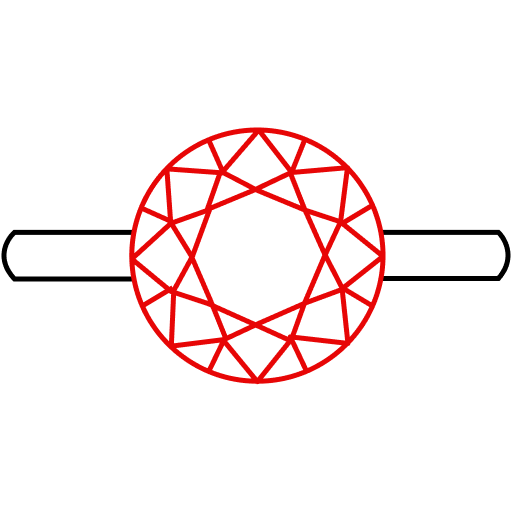
 Color Diamond Rings
Color Diamond Rings

 Lab Gemstone Rings
Lab Gemstone Rings

 Men's Rings
Men's Rings

 Round
Round

 Pear
Pear

 Oval
Oval

 Princess
Princess

 Asscher
Asscher

 Marquise
Marquise

 Emerald
Emerald

 Cushion
Cushion

 Radiant
Radiant

 Heart
Heart

 Old Cuts
Old Cuts
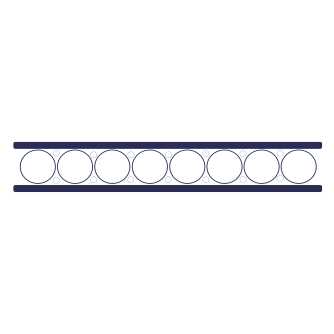
 Eternity Bands
Eternity Bands

 Dainty Bands
Dainty Bands

 Custom Bands
Custom Bands

 Men’s Bands
Men’s Bands

 Studs
Studs

 Hoops
Hoops

 Jackets
Jackets

 Dangle
Dangle

 Bridal
Bridal

 Tennis Bracelet
Tennis Bracelet

 Fashion Bracelet
Fashion Bracelet
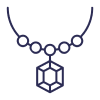
 Pendant
Pendant

 Necklace
Necklace

 Men's Jewelry
Men's Jewelry

 Pink
Pink

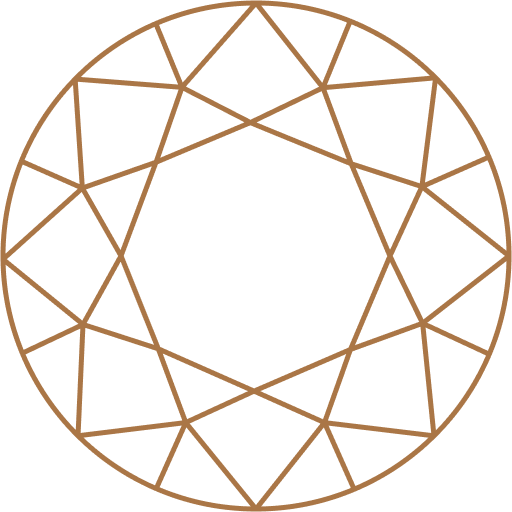 Champagne
Champagne

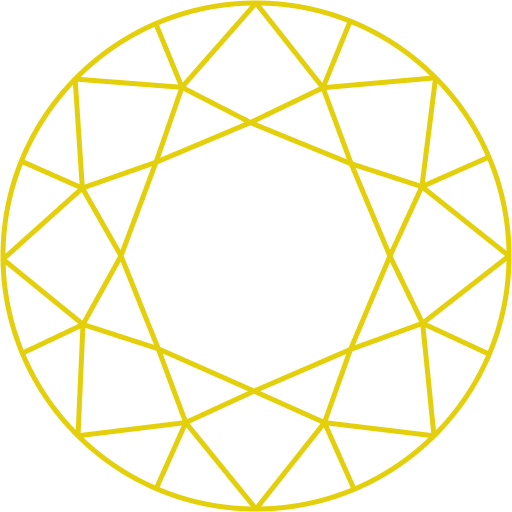 Yellow
Yellow

 Blue
Blue

 Black
Black

 Green
Green

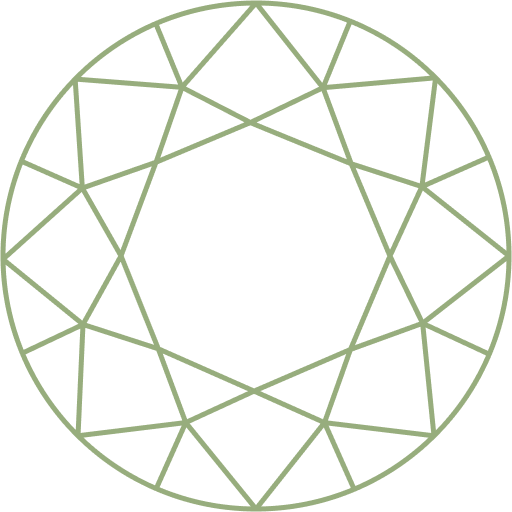 Olive
Olive

 Ruby
Ruby

 Sapphire
Sapphire

 Other Gemstone
Other Gemstone

 Old Cut Jewelry
Old Cut Jewelry

 Antique Diamond Jewelry
Antique Diamond Jewelry

 Kids Collection
Kids Collection

 Celebrity Jewelry
Celebrity Jewelry

 Old Cut
Old Cut

 Antique Cut
Antique Cut

 Matching Pair
Matching Pair

 Step Cut
Step Cut
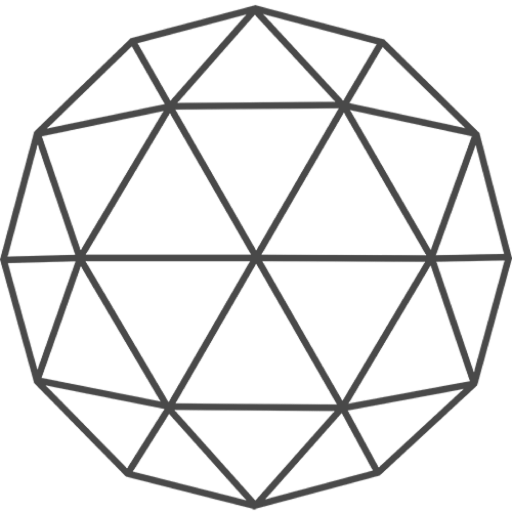
 Rose Cut
Rose Cut

 Portuguese Cut
Portuguese Cut

 Portrait Cut
Portrait Cut

 Pie Cut
Pie Cut

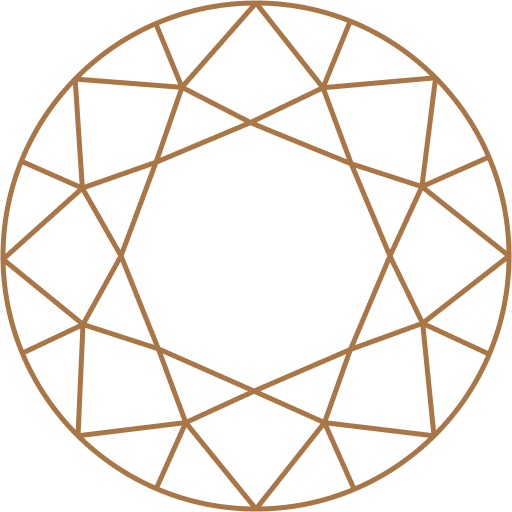 Champange
Champange

 Other
Other

 IGI-GIA Certified
IGI-GIA Certified

 8X Diamond
8X Diamond

 Ready Stocks
Ready Stocks

 OEC Round
OEC Round

 Old Mine Cushion
Old Mine Cushion

 Old Mine Moval
Old Mine Moval

 Old Mine Emerald
Old Mine Emerald

 Old Mine Asscher
Old Mine Asscher

 Old Mine Pear
Old Mine Pear

 Old Mine Heart
Old Mine Heart

 Rings
Rings

 Bands
Bands

 Earrings
Earrings

 Bracelets
Bracelets

 Anniversary Gift
Anniversary Gift

 Birthday Gift
Birthday Gift

 Gift For Her
Gift For Her

 Gift For Him
Gift For Him

 Under 300$
Under 300$

 Under 500$
Under 500$






